Video 1:
3 bands of glory
#meetthelegend
Video 2:
No more concerns
#norocketscience
Video 3:
The final countdown
#areyoukittingme
Video 1:
3 bands of glory
#meetthelegend
Video 2:
No more concerns
#norocketscience
Video 3:
The final countdown
#areyoukittingme
In this video & epaper series I will show you everything you need to know about this famous passiv tube equalizer and
– more importantly –
how to get this legendary piece of gear in your studio by building one yourself!
Part I
#meetthelegend
Ok – first, let’s start with the video. In this introduction I’ll give you a brief and basic overview about the iconic tube program equalizer aka the Pultec EQP-1a. We’ll also listen to it and dive a little deeper into how it does its magic…
As I didn’t want to stretch out the first video too much, I also made a very detailed and dense 8-pages e-paper for you, in which I go to the heart of it. It’s the first e-paper of this Build Your Legends Series and you can just download it – as always – for free!
You’re welcome 😉


Part II
#norocketscience
Inspired by your comprehensive feedback over the last two weeks (see comments below), I decided to take a turn and dedicate this video completely to your main questions and concerns which seems to hold a lot of you back from building your own gear.
As a professional interpreter, I work on rockets and I deal with precision-machined parts and finishes on a daily basis. The execution (sheet metal bending, cut-outs) and the paint job is absolutely fantastic! Way to go! Your hard work means a lot to us gear heads.

Part III
#areyoukittingme
I really had a lot of fun shooting these videos and I hope you also had fun watching them – and more importantly will have even more fun Building Your Legend.
So now, your turn – plug out and play the real thing:
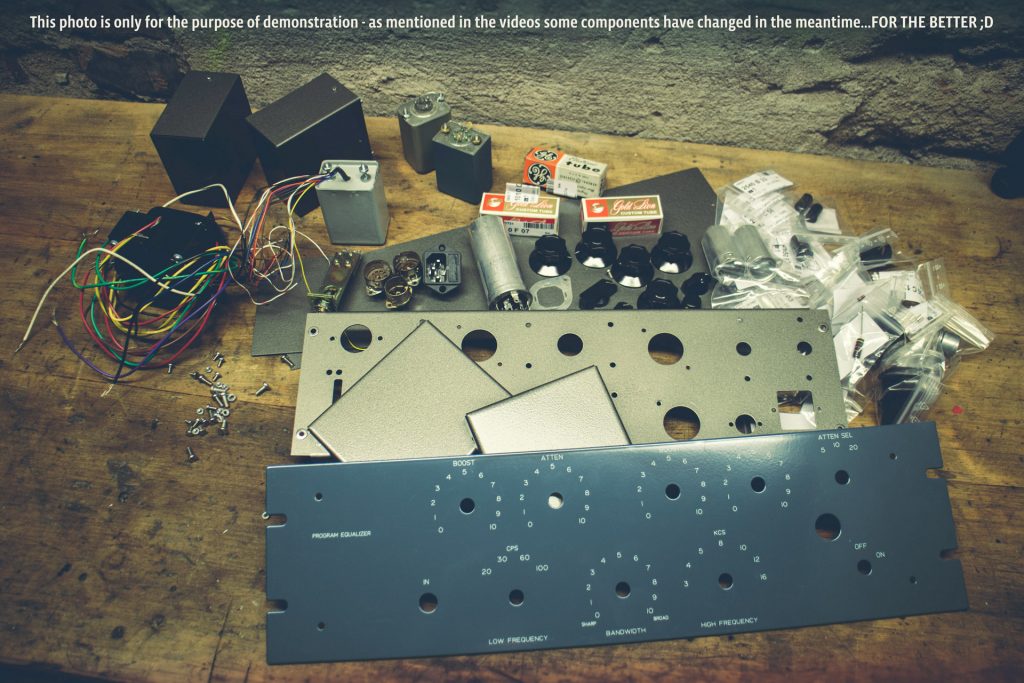
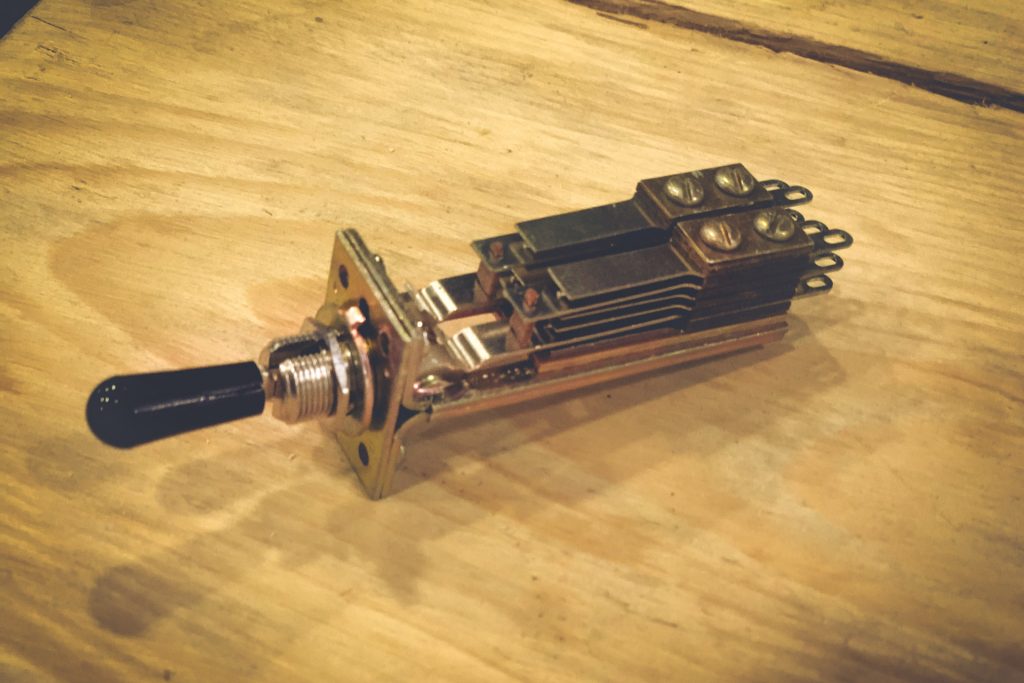
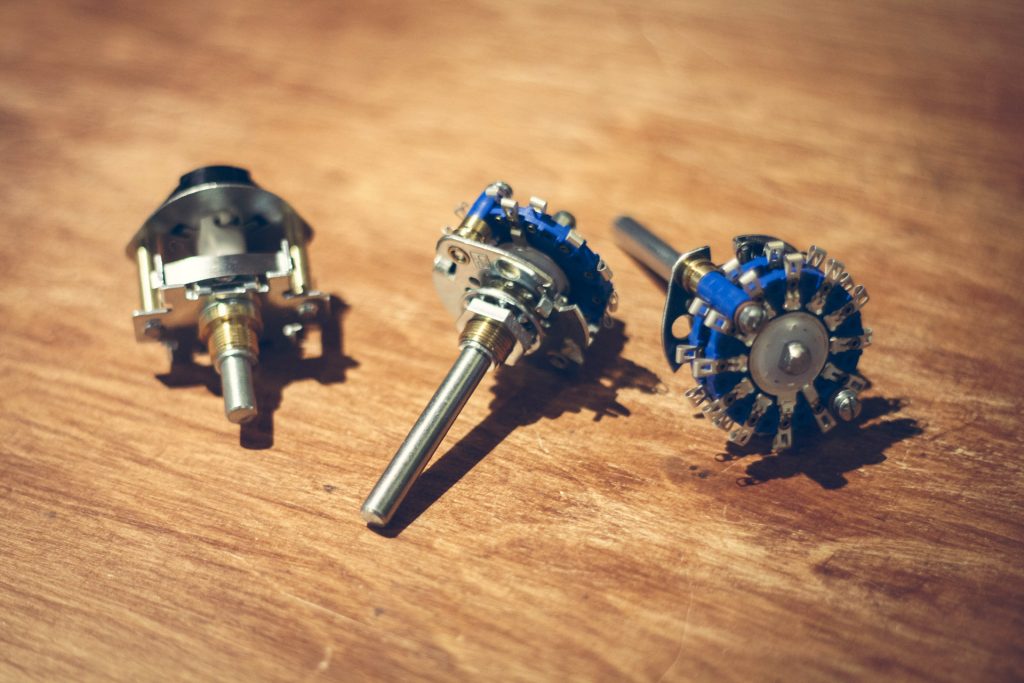
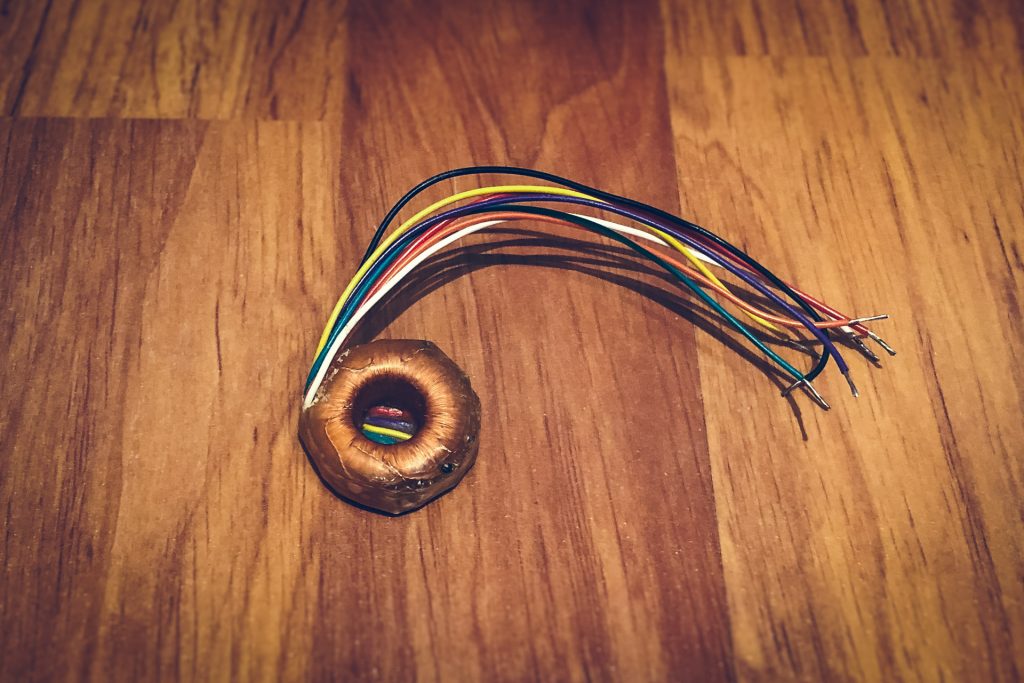
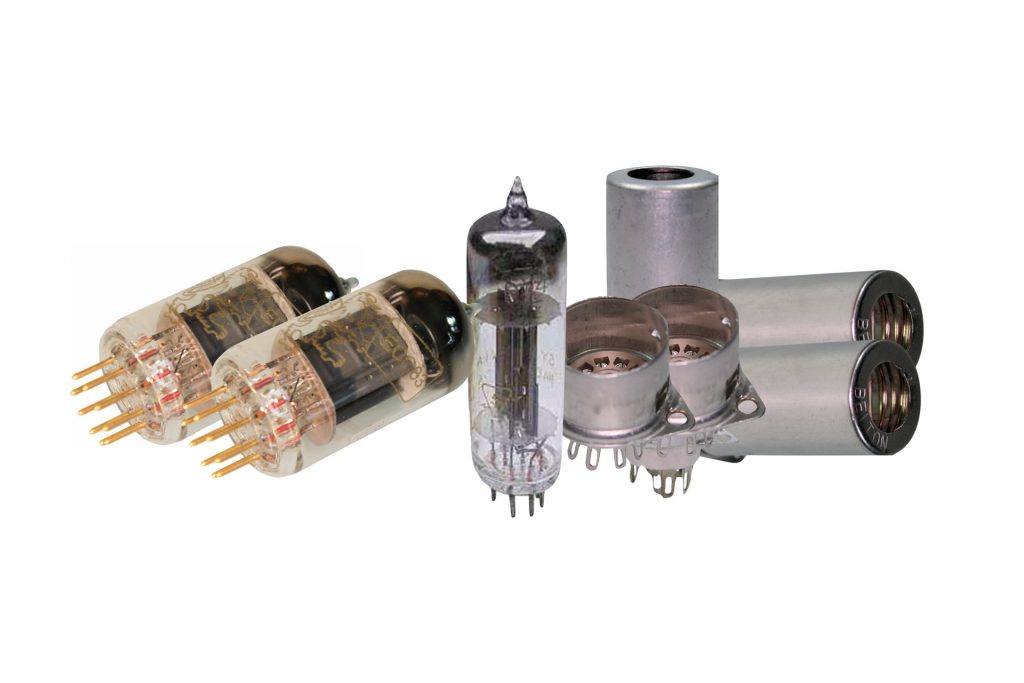

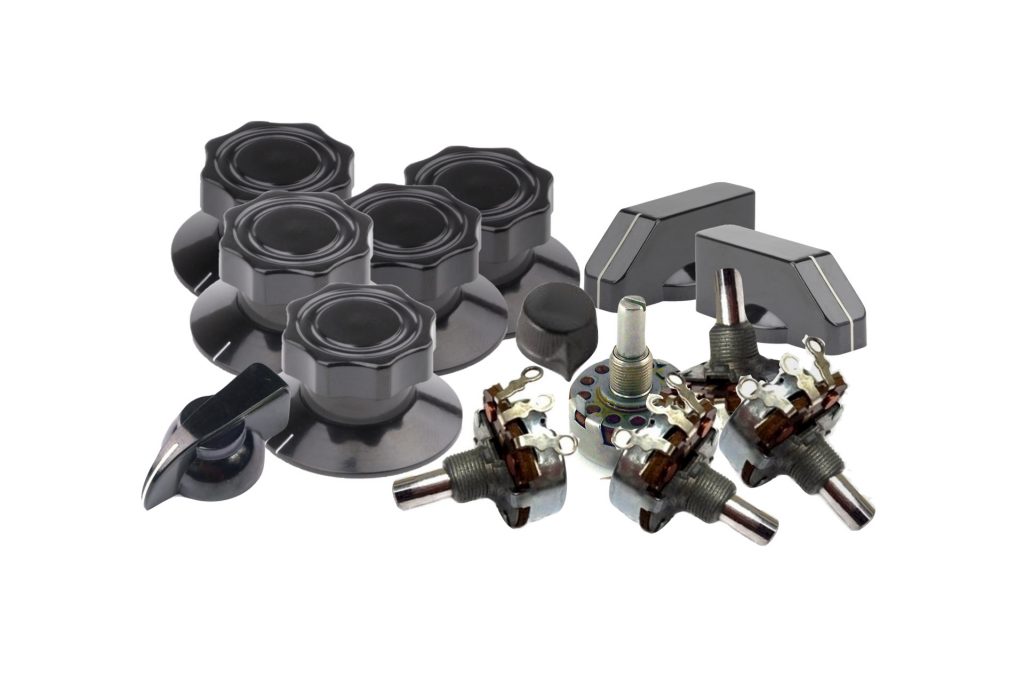
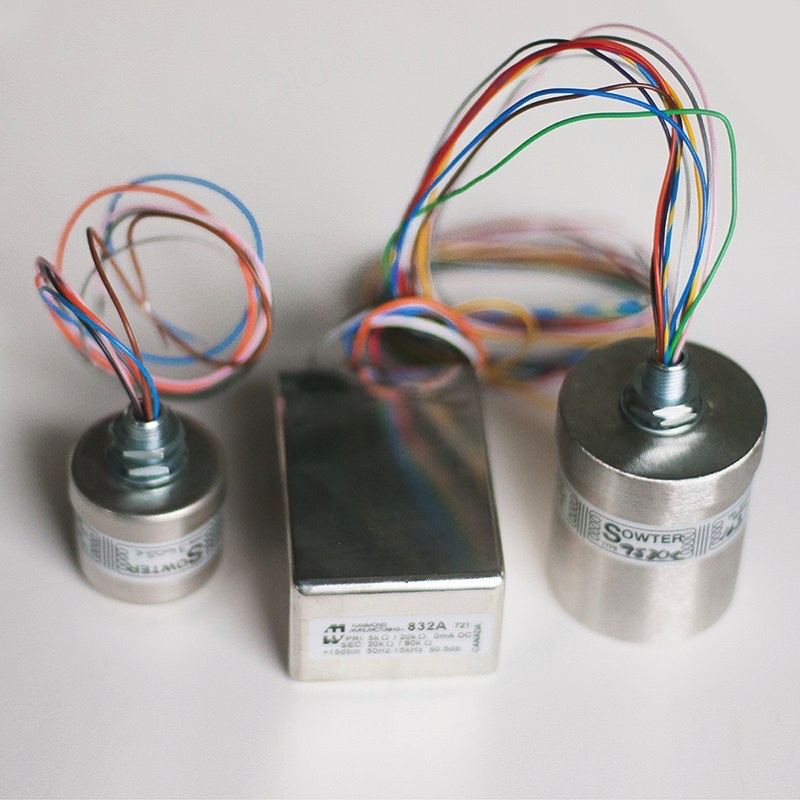

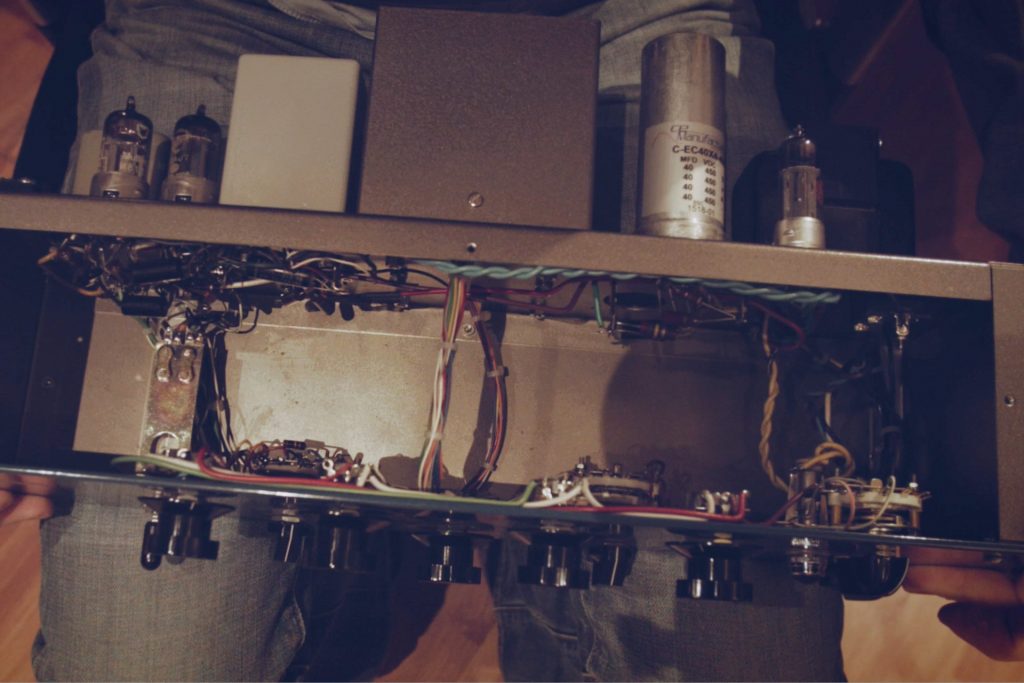

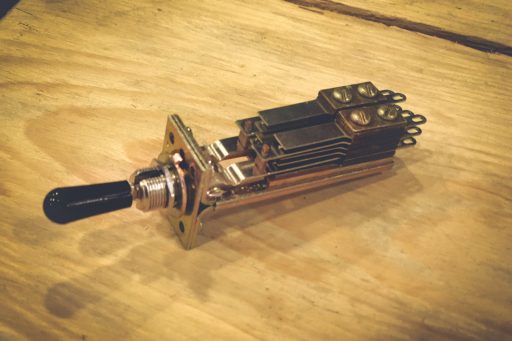


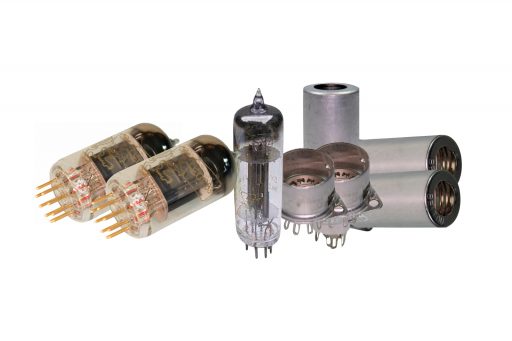

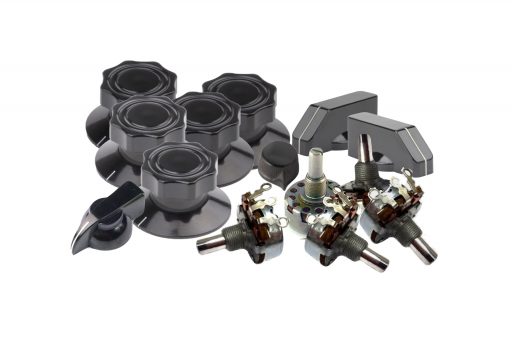
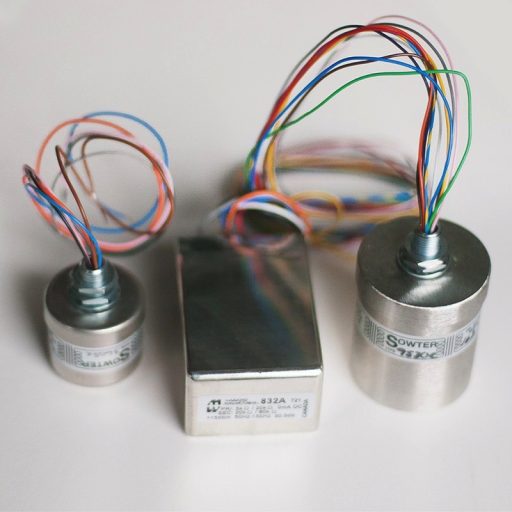

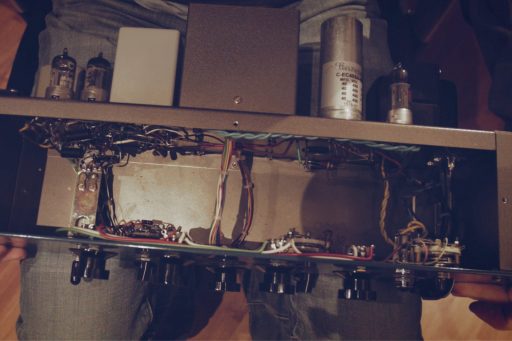
What you get
High quality chassis + every single component
(click on the + for details)
plus…
…the complete analogvibes Welcome & Build Your Legend Series e-paper collections
(click on the pictures to open)
plus…
…the ultimate Building Guide to make building your legend almost as easy as painting by numbers
How we’ll make it happen
As mentioned in the videos we can only make a new project happen together – meaning we are going for a GROUP BUY. We have done this several times in the past for all our available projects. It has proven to be the best way to bring these projects to life which otherwise wouldn’t have been possible.
For better understanding & transparency I have set up a small roadmap for you. To be more on the safe side, the timeframes for each phase are generously estimated so if everything runs smoothly we may be quicker. But although we prepared this very carefully, if unforeseen obstacles arise (and experience tells there’s quite some possibility for that) it is also possible that it may take a little longer.
Roadmap to your Kit
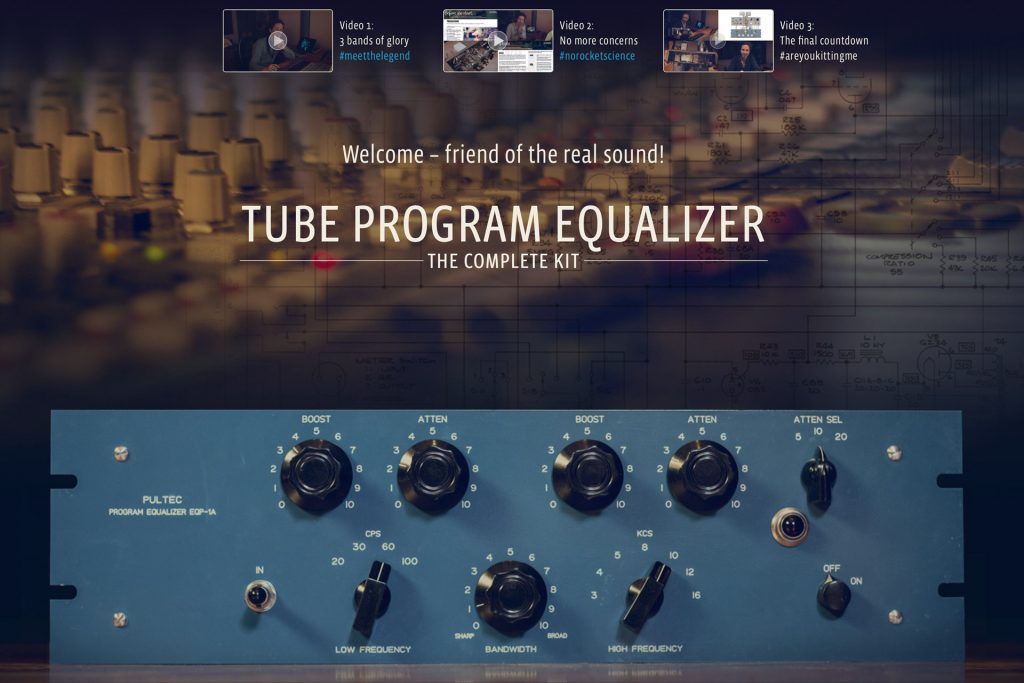



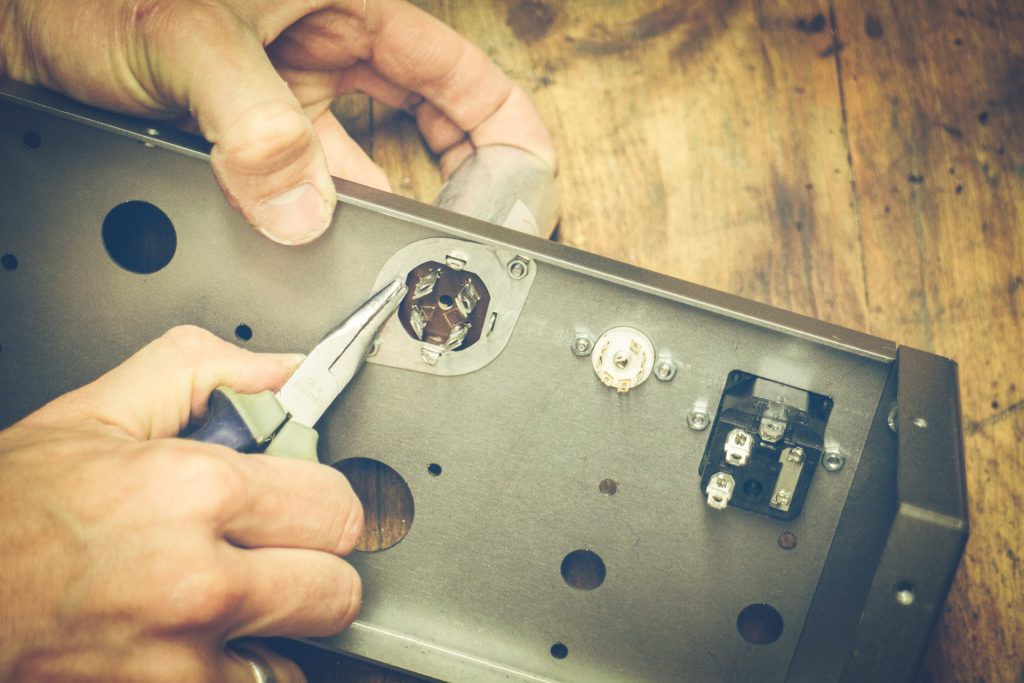

Lastly some really important notes & conditions – please click on them & read thoroughly!
As we face minimal order quantities for several parts of the kit we’ll need at least 30 kits pre-ordered to make it happen. If we should somehow not reach that goal (I really don’t think so) the group buy is off and we will refund the preorders that have already been paid for.
UPDATE: I’m extremely happy to announce we already crossed the minimum of 30 kits preordered within 48 hours after the announcement of the kit!
And that means THE KIT WILL DEFINITELY HAPPEN!!
Thank you so much for the confidence folks and I promise you won’t be disappointed! For those of you who have been hesitating – you can now join the preorders with your minds set at ease 🙂
Please check our shipping information: click here
Please Note that if your are located outside the EU there may be additional costs for import duty & taxes. Please check with your local authorities.
With your pre-order you agree to opt in to the analogvibes newsletter so we can keep you up to date with the progress.
The already finished e-papers will be sent to you with the order confirmation. The upcoming ones follow via email once the kits are ready for shipping.
We highly recommend though, that you create an account during checkout, so you have all the e-papers in their latest versions – always accessible in one place.
Any questions left? If yes, put them in the comments for me, so I can reply to them. Maybe some others have the same questions (praise is also welcome ;-).
You might also have a quick look at the Meet-The-Legend-Page of the Pultec EQP-1A for details on that legendary piece of gear.
All set?
Well, then go for it!
Pre-orders are closed – The Group Buy has been successfully launched – Thank you guys!
& also let others know about our analog passion:
Feel free to leave me a comment…
In case you are wondering, the older comments are answers to the questions below which I asked at the beginning of the series.
Or – if you already started to build your own gear:
This Post Has 65 Comments
thanx…how do I order a kit???
Will there be a second run of the pultech big kit?
Looks very good! I hope there will be another batch.
Looking forward to the next batch to order.
Where can i order kit for 2 units?
HI,
Very interested I the full kit! I’m late to the game, but hopefully you will make it available again. Please let me know when it becomes available. At least two here!
Hallo Martin, ich interessiere mich für n Kit und würde auch 2 nehmen. Herzlichst
Hi! I am also interested in a second batch. Would order two units 🙂
Very much interested in a second batch. Like to see the most recent update of your finished unit.
I’m also very interested in a second wave of ordering. That would be really awesome. Please make this happen 🙂
I picked up a pair of chassis back in 2017 on group diy and still have yet to build them! I’ve sourced most of the parts except the interstage and output transformers and the filter capacitors. Are you going to be able to offer any parts separately from the whole kit? I’d be interested in the transformers and the filter capacitors.
Any chance you open a second wave of ordering?
How can i get one??
Hey Martin,
Since I missed the deadline – will there be a second round eventually or is it possible to hop on the current phase somehow?
Would be so incredibly awesome <3
Best
Ennio
Hallo Martin
ich Depp habe die Preorder Deadline verpasst :-((( Gibt es irgendeine Möglichkeit, da undercover noch reinzurutschen? Bitteeeee!!!
Lieber Gruss
Kriz
Do you ship to the US of America? It said the world but specifically and how much. What is the total amount in US currency. I’m trying to be brief. Have you reached your goal or what is the current group number at this time before you can start ordering and shipping? Could you give me a total amount in American money the Unit shipping and receiving. I’m in Pennsylvania.
Indeed most members of the analogvibes community are from the US, so yes we do ship to the US.
Shipping feed will be displayed in your shopping cart prior to checkout. And by taking the total in EUR it should be very easy to find out how much it is in USD 😉
As mentioned above (simply scroll up a little) we already reached the goal within 48 hours after announcing the kit.
If you’re looking for more experience from some US members I highly recommend you join our Facebook group
Looks great
Hello
I have a very basic question concerning the unit. Is this a 2 channel or single chanel unit?
Thank You
Piotr
Hey Piotr
this is a 100% faithful recreation of a vintage Pultec EQP-1A – that means it’s a single channel
What an exciting page to discover (thanks to Peterson of DIYRE). Can’t imagine the amount of time you put into all of this but it is clearly to everyone’s great joy. I would love to undertake this build. How long do you anticipate the kit will be on offer? I’m not in a position to afford it at present. Thanks for all your hard work.
Marc
Thanks for your feedback Marc – I really appreciate it!!
The group buy will be open until end of January. It might be a couple days more but then I’ll have to close it. Since many of the parts are custom made for us, I can only order them if I know exactly how many we need. And in order to not have those, who preordered right after the announcement of the group buy, waiting too long, we need to keep it all within a certain time frame.
We’ll try to make the kit available in the shop at some point later, but 1299.00 is the special group buy rate only in order to bring this project to life…
Martin
Hi Martin,
What a great kit for the Tube Program Equalizer… Absolutely great work on this!!!!
I’m a beginner in audio electronics; Did a PCB G-SSL build and a NightEQ-3 (Maag) build myself with some help of a friend doing the ‘debugging’. I’m way better with microprocessors than analog audio 😉
Would you suggest I first do your tube comp (LA-2A) build to practice some PTP work before I go on with this EQ? I feel a bit insecure to order 2x EQ kit and just have a go… The LA2A would be one unit, for the EQ I would require a stereo-pair in my workflow.
Hey Jeroen,
Glad you like it 🙂
It seems you already practiced some soldering. I don’t know if it’s necessary to actually “practice” P2P work. I know that in your head it might seem more complicated – at least that’s what I thought before starting my first P2P build (which actually was an LA2A) But it turned out it was only in my head – it’s actually easier in some way and also it was much easier to understand how the unit actually worked compared to stuffing pcbs.
It’s all depends on how good the instructions are…and that’s why I started analogvibes 😉
So far the easiest one to build of the projects was the Tube Opto Compressor (aka LA2A), but not because it’s most simple circuit of all, but because it came with the most comprehensive instructions (25 pages wiring layout, 60 pages step-by-step building guide etc). And even though the entire BOM includes links to all the components and even a Mouser cart, you still have to buy all the parts yourself.
The circuit of the Tube Program EQ (aka Pultec EQP-1A) is actually more simple than the LA2A but the instructions were only fairly basic so far.
But with the kit they’ll be on the same level of detail as for the LA2A plus the parts will already be included as well. So that will definitely make it a lot easier.
In the end – if you’re like me you’ll want both anyway 😀
There’s a few pieces of gear in my studio I could probably live without if need be – but definitely couldn’t do without my LA2As and my EQP-1As…
Hi Martin,
Thanks for your extensive reply – much appreciated! Your explanation and story made me realize it might be time to just pull the trigger. Just ordered 2x EQP-1A Kit and 1x LA2 Enclosure with e-papers – let’s see how things go 🙂
Will check out the community on Facebook as well and keep you updated.
Good luck on finishing the project & kits!
What mains voltage will the power transformer be expecting? (i.e.: I’m in North America and would prefer to not have to use a step-down transformer)
Harold the power transformer will be universal primary and can be wired up either way – for US or EU mains. It will all be explained in detail in the building guide 🙂
hope that helps
Martin
Why did you decide on the greyish-blue front panel color moving away from the original blue (like the chassis kit)? I thought the EQ is supposed to be as close to the original as possible.
Regards, Peter
Hey Peter,
I made the decision, because the greyish-blue is closer to the original 🙂
When I made the first EQ I didn’t have an original Pultec unit at hand, so I had to judge by recommendations and literally pics I found on the web.
But now someone from the analogvibes community sent me an original Pultec EQH-2 and I could compare the colors.
So in short: the new color will definitely be closer to the original
hope that helps
Martin
I finally came up with a couple questions, though you may find the first a bit sacrilegious. I have intention of using all my analog in a hybrid workflow. For recall purposes, it seems like having stepped controls is ideal. For stereo purposes, it seems like rotary switch attenuators are ideal. But the cost for an Elma A47 or similar Goldpoint, populated or bare, seems very high. Especially when considering something like the Pultec EQP1, which would require 4-5 fine-step controls to be truly useful.
So my question is, is there an affordable way to implement stepped controls, such as a custom circuit board complement to inexpensive, readily-available switches? And would this be more time consuming in the end than using recall sheets and listening carefully dial-in the matching settings?
The only other question on my mind is how to calculate appropriate resistor values to safely discharge higher value capacitors before working on gear that has been powered. And relatedly what sort of resistor selection to keep on hand for this, and also in general? (Coming mainly from working on kits, I don’t have a large selection of surplus components.)
Thanks, Martin!
I keep a 5 or 10 watt resistor for that on hand, covered in textile tape, to pich it up with pliers
Hallo Martin,
Danke für die Arbeit die ihr in dieses Projekt reinsteckt.
Über die letzten Jahre habe ich durch eine Vielzahl an Projekten die ich im Gitarrenverstärkerbereich und eben im Bereich der analogen Studiogeräte
durchgeführt habe erfahren dürfen wieviel Spass das ganze macht aber eben auch wieviel Arbeit dahintersteckt wenn man nicht nur 0815 -mässig was zusammenbrutzeln will. Daher noch einnmal Hut ab vor dem was ihr bei analogvibes auf die Beine stellt.
Fragen zum Aufbau der Geräte habe ich eher weniger mir geht es im Vorfeld noch einmal darum zu erfahren mit welchem Umfang der Kit kommt bzw. wo ich noch Teile beschaffen muss.
Ich freue mich sehr darauf in Zukunft hoffentlich 2 EQP-1a’s im Rack zu haben. Mein Opto-Comp ist gerade fertiggeworden und macht mir viel Freude.
Viele Grüße,
Michael
Hi Martin, I really love your eye for detail and the seemingly high accuracy in performance of the EQP1a. A few years ago I build an Igor design of a Sontec MEQ5 and I use it daily (just waiting for JLM to release his Sontec DOAs on a normal footprint).
I cannot wait to start building some EQP1as. But with a twist: I actually want to try to use two EQP1as as a pair for mastering, I want a box that is far from clean and has lots of mojo and already adds vibe in bypass. So my mod would be switched rotaries and all parts matched for stereo use. Most likely I’ll have to spend a lot of time getting them within 0.1dB from each other (if I fail I’ll just use one for mastering bass on the M of the M/S channel and use the other in my studio for tracking/mixing).
So to answer your question:
What were the major obstacles holding you back in the beginning and how did you overcome them?
I have built discrete digital electronics for 40 years now and I love computers, but in my studio I rely on analog audio, and as you know as no other, that is a completely different ball park. Main obstacle for my Sontec build was the shear cost before even beginning in combination with having to trust that I will be able to find and correct any mistakes. In the end I actually did not make any mistake and the machine measured amazing. Although in hindsight I wished I had spent a few thousand more on Elma switches instead of Chinese ones that feel very cheap and not durable (no failure yet though).
So the fear of my failure vs the initial costs was a thing for me. To overcome it I bought parts cheap and in batches, pcb + electronic parts first, then the case + switches and at last hunting down a pair of Forsell DOAs. But the end-result gave me a lot trust that I can build pro audio grade circuits even when soldering 428 resistors by hand looks very daunting and error prone.
Cheers for all your time and effort you have put in sharing your reproductions, Joshua
Hi Martin,
I am a freelance engineer at Bias Studios in Springfield, VA U.S.A
My response for the questions:
Will the kit consist of high quality parts? What kind of transformers and what tubes will be included? What switches will be included and if there will be an option to have a stepped mastering edition added at an additional cost?
I have only been building gear for less than a year, but it has overcome my being. The difficulties I had and still have is a complete understanding of electronics. I know some , but I really want to develop a strong foundation in electronic knowledge, especially in audio electronics. Another thing that I had to overcome is having a steady hand for soldering and being extremely organized, on an OCD level, to make sure I am installing the correct components. I remember my first build I messed up on an op-amp build for a pre and next thing I know one of the resistors caught on fire! It was amazing, but the learning experience of troubleshooting the issue was the best part.
I can’t wait for this kit to come out! I would like to know what the ball park range of the price will be and how much shipping will cost to the United States?
Many thanks,
Brian
Hi Martin,
thank you for doing such great work and putting in great effort. I am already in DIY business and working a lot trying to get good analog gear in my studio. It is fun at the same time (I always joke it is like Lego for adults).
First of all, when I wanted to get into DIY I didn’t even know I want that. Resources were scarce and I did not know how close I could get to the original and what would be issues in building everything. Main obstacle was that I did not know always which tools I would need, how “bad” they can be (can I use 30eur soldering iron and average DMM or I would need to invest a lot more) and most of the resources regarding post building process, such as troubleshooting and calibration were scarce in steps, as well as information on tools and exact procedures. They would assume a lot of knowledge and I had to research a lot.
Also, in case of a failure or burned in part, there was no directly available BOM (at that point I wasn’t sure what the term BOM meant as well :)), so I did’t know where to get spare parts.
And last but not least, maybe even the worse one was the fact that buying things in Montenegro, even though we are in Europe, can be expensive because of shipping and customs, since we are not part of EU. This led to the moment that sometimes I can only buy full kits and not partial ones, since buying all the other stuff from various sources can sometimes take too much money and time, because of shipping mainly.
Later on, I was put off getting some kits, because they would offer it as full, but some parts were missing, like essential things for PSU or something similar that would be considered easy to get or they would offer it as partially built or some components pre-built, which would cost a lot more and then it would be easier to get just a finished unit (if it is only 20-30% less expensive than fully finished unit, I would rather go with finished unit then through hassle of building and calibrating).
Also, in some cases later on, I ended up with a handfull of components, so it is great to have multiple kits for each item if it is possible, like PCB and case, just rare parts, transformers and tubes and of course full kit.
I hope this was helpful.
What are your top two or three questions about building the upcoming tube program EQ that you’d want me to answer in the BYL-Series?
The first question would be what is the price ?
Second question is : I would like to know the specs for testing the gear with oscillo ? I mean I’d really like to see a A/B comparison with the original.
Last one, linked to the second : A little tuto for the common problems and debugging it would be nice.
— if you already started to build your own gear:
What were the major obstacles holding you back in the beginning and how did you overcome them?
The main obstacle for me is to choose the right components. It’s always a long road to make a BOM. The other one is to avoid noises with transfo and grounding.
Hallo Martin, Hallo Analogvibes-Team,
ich schreib mal auf deutsch (mein Englisch ist noch schlechter ;-), hoffe das ist OK.
Erstmal: Ganz vielen lieben Dank und noch mehr BigUp´s für Deine/Eure Arbeit!!!! Man merkt sofort Eure Passion und Liebe dafür! Alles ist sehr interessant und ausführlich gestaltet! Es bleiben eigentlich momentan gar nicht so viele Fragen übrig.
Vielleicht aber diese:
Muss man beim Löten bestimmter Bauteile auf die Temperatur des Lötkolbens achten? Grundsätzlich ist schon klar, dass man nur so kurz wie möglich erhitzen soll – aber gibt es Bauteile, die besonders empfindlich sind? Und kann man durch Temperatureinstellungen Risiken vermeiden?
Kann man vielleicht schon beim Löten erkennen, dass man das Bauteil gehimmelt hat?
Sollte man beim Einsetzen der Röhren Handschuhe tragen? Hab gehört, dass Fettabdrücke auf dem Glas der Röhren später aufgrund der Hitze Schäden verursachen können.
Gibt´s ne Reihenfolge beim Zusammenbau, die man einhalten sollte?
Naja, meine größten Hürden und Bedenken hast Du schon in Deinen Videos und Interviews erwähnt:
Bastler war ich ja schon immer, aber solche Kisten selber bauen, war mir doch ne Nummer zu groß.
An so ein großes Projekt hab ich mich bis jetzt nicht dran getraut, weil ich nicht genug Fachwissen hab. Allein die richtigen Bauteile zu identifizieren und dann die richtigen zu bestellen find ich schwierig, da fehlt mir die Geduld. Schaltpläne lesen und umwandeln trau ich mir auch nicht wirklich zu. Was ist mit der Platine? Wenn´s ne Standard-Platine ist, muss ich den Schaltplan in einen “Bestückungplan” transferieren……ähhhhm, ja! Eine ätzen lassen (vermutlich eh zu teuer)…..dann brauch ich das Layout, selber machen…unmöglich!
Außerdem hab ich nicht genug Präzisionswerkzeug um so schöne Gehäuse herzustellen (Das Auge hört ja bekannlich mit ;-).
Aber diese Probleme löst Du/Ihr ja gerade in Luft auf :-))!
Hoffe, ich konnte Dir ein Kleinwenig weiterhelfen und freu mich schon sehr auf das Pultec-Kit!!!
Blessings & HeARTical Greetings!
Hallo Martin,
gerne gebe ich Resonanz.
Zu 1)
Wie hoch ist der Preis für das EQ-Kit?
Gibt es verschiedene Ausstattungsvarianten (verschiedene Übertrager/Röhren)?
Zu 2)
Bisher abgehalten von DIY-Projekten hat mich der zum einen der Umgang mit hohen Spannungen (Strom) und zum anderen die Ungewissheit alle Bauteile von verschiedenen Anbietern zeitnah zu erhalten. Sollte der ein oder andere Artikel mal nicht lieferbar sein, müsste man alternative Bauteile beschaffen und natürlich vorher wissen, welche „soundneutral“ sind.
I have been building my own gear for a while now using DIY kits and in the beginning, the biggest challenge and worry for me was making sure my soldering skills were good enough. I think if you include a solid tutorial on soldering, this might help some beginners gain the confidence to start their own DIY projects. Looking forward to building the Pultec kit when it comes out!
Hey Martin,
nen Pultec könnte ich als Kit sehr schnell bauen, die Fähigkeiten habe ich.
Nur leider fehlt mir für so ne große Kiste, die auch noch mono ist, einfach der Rackspace.
Sowas im 500er Format wäre cool. Ja, ich weiß die lästigen +/-15V könnten ein Problem werden. 🙂
LG
1) how much
2) a way to verify it is working correctly
Hi Martin – I’ve been DIY’ing for many years (I’m 55 years oldJ and started with simple kits with clear, step by step instructions. The building is usually the easy part, but the troubleshooting can be hard, especially if you don’t know much about electronics. Some clear guidance to the most common problems is very valuable. I also find strong support in forums from other builders. I’m now in the middle of sourcing the parts for a Poorman Fairchild 670 project which is my most challenging build so far. Good luck with your PEQ1A. I’m looking forward to building a pair of these in the near future.
Hi Martin,
Glad to hear the kit is nearing completion. I’ve still got the funds for a pair set aside.
In response to what major obstacles have been for me, I can think of two:
1) before building my first kit that used a PCB, I didn’t understand that it’s essentially a puzzle, where PCBs are generally labeled with a reference designator and a part value, which refers to a bill of materials that is labeled the same. I thought the only way I’d know where to put each part would be from my own knowledge of electrical engineering/schemeatics/figuring it out on my own, which I didn’t feel confident with. Once I realized PCBs are generally labeled, and especially combined with detailed instructions, it became a very exciting opportunity rather than something scary.
2) the second obstacles is still one I worry about, but haven’t had many issues with, though friends have worried about it as well. What happens when you build a kit, and it doesn’t work? I’ve never had it happen personally, but it’s always a concern. I know to check that resistors are in the right place, that caps were placed in the right orientation, etc., but with parts I’m less familiar with in DIY kits like tubes, there is always a lingering concern that something won’t work and I’ll have nowhere to turn to fix it. With products that have been out for years oven there are extensive build support threads, but they can be daunting to go through. With new products, it’s an even bigger concern.
I asked a friend who is less experienced the same questions, and she said that number 1 wasn’t a worry for her because I had showed her how everything is clearly labeled, but number 2 is still a concern of hers.
About the Build Your Legends series, the biggest questions I have are about parts I’ve never used before. I’m very experienced with placing resistors, caps of all types, transistors, diodes, but I’ve never worked with tubes before. I’ve wired transformers before, but don’t know how to figure out transformer wiring without a guide saying “the red wire goes here, the yellow wire goes here” etc. I’m also very used to working on PCBs, but I haven’t done anything with many wires, especially ones that need to be twisted and routed certain ways in order to not pick up noise and things like that. Those are the main reasons I’ve been waiting for a Build Your Legends series and not comfortable just ordering the parts and following the BOM.
I hope this helps. I’ll be looking out for that preorder.
Hello Martin
thank you very much for your Email.
My “important wishes” would be:
– photos of your example build
– photos/diagrams of the wiring
– some circuit measuring points and signal specs. (like grid voltages etc.)
Best regards and a happy Xmas
Hello Martin,
I haven’t built your EQP-1A project (yet!), but I have built one of your MEQ-5’s with another waiting in the wings as soon as the chassis become available again.
Understanding that the MEQ-5 build doesn’t come with step-by-step instructions and is not directly answering your MEQ-5 questions, the build over all was fairly easy to push through. My biggest challenge was trying to figure out where / how the filter capacitors where to be mechanically installed. Unfortunately, for my build, I chose to build a tag board inside the main chassis which now I realize is not where a real build would have placed them. Apparently, the inductors and capacitators are all housed with the exterior can enclosure somehow? Since I’ve never seen the insides of a real MEQ-5 and for whatever reasons couldn’t find any internal shots of the same on the Interweb’s for reference, I did what seemed logical. Wrong!
So, while still not clear how all of the caps and inductors are actually supposed to be mechanically installed within the cap enclosure, I will attempt this on my next build and if successful, will rebuilt my current build – not that this will change anything about its operation, but just because I can.
Short of that, it would be nice to be able to buy some of the other parts for the MEQ-5 on your site that Don-Audio also sells. For example, an option to purchase the Chicago Bake-lite knobs through your cart given the fact that Don-Audio is providing fulfillment. Of course, your EQP-1A kit-in-a-box along with detailed instructions will go a long way in illuminating the challenges I had to fight through.
Lastly, I ended up sourcing original Triad trannies for my MEQ-5 build. Will you be offering your full kits with options for buyers to buy all component in a box or all components, except transformers or tubes or ? For example, I have a set of Traid trannies in hand waiting for the second MEQ-5 build. I would hate to be forced into buying transformers as part of a kit that I had no intention of using.
Hope this helps.
Cheers,
Greg
Hello Martin,
here are the answers to your questions:
What are your top two or three questions about building the upcoming tube program EQ that you’d want me to answer in the BYL-Series
1) Do I have to calibrate the tube operating point or is that covered with selected tubes?
2) How often do I have to replace the tubes or to make an inspection of the unit?
What are the major obstacles or doubts that are holding you back from starting to build your own gear?
1) Getting circuit diagrams and all parts for building up a DIY HW.
2) Not having the right tools for getting a well designed chassis.
3) Lack of time
Hi Martin,
The most difficult thing when I started DIY was to find a simple way of sorting and preparing all the components.
I tried first to check all and stick them with adhesive tape on the BOM, and now i have a very fast technique involving a little time of preparation
but a very fast time of building.
All the best,
Hi Martin,
Ich hab Dein Interview in der Sound&Recording gelesen, und gehe jetzt einfach mal ganz frech davon aus, dass Du Deutsch sprichst..?
Um deine dritte Frage zu beantworten:
Meine größte Herausforderung mit dem ganzen Löten zu starten war, dass ich es zuvor nie gemacht hatte und dachte, es ist schwierig. Ich hatte dann Glück und eine riesen Hilfe, denn ein Freund von mir hat mir gezeigt, dass es mit ein bisschen Geschick ganz leicht ist.
Trotzdessen “verstehe” ich immer noch nicht genau, was ich dort tue. D. H. Wenn alles glatt läuft, ist es super. Wenn ich allerdings einen Fehler gemacht habe, weiß ich nie, wo genau dieser zu finden ist.
Dafür renne ich dann zu Meinem Elektriker Freund und lass mich belehren..
Daher hab ich auch manchmal immer noch Angst, Geld dafür auszugeben, dass es am Ende evtl nicht funktioniert, weil ich irgendwo nicht aufgepasst hab, oder evtl 270k mit 27k, 2,7k oder 270r verwechselt hab..
Ich hoffe, ich konnte Dir mit dieser Auskunft helfen,
Liebe Grüße,
David
nachtrag – das ist übrigens auch der Grund, weshalb ich mich bisher noch nicht an die point to point Variante des la2a getraut habe.
Kits zusammengebaut habe ich schon mehrere, wenn es aber mit einer BOM Liste läuft, habe ich keine Ahnung, WELCHEN Capacitor (es gibt oft verschiedene Firmen oder Anbieter), welchen Resistor, welchen welchen welchen ich zu kaufen habe, und stehe dann etwas ratlos und frustriert da.. 😇
Hey Martin,
This is so awesome! I’m happy to provide some feedback to help you.
First, I am a very new DIY builder. I am still in the midst of my first build, one of the SSL 4000 compressor PCB projects. So maybe that gives you a perspective on what I will say regarding the Pultec project.
Questions about the upcoming kit (not sure if these are the type of questions you are looking for, but it’s something!):
1. I know this is a “complete” kit, but will there be incidental items that I am required to purchase separately (not including tools)? For example, the build that I am working on now came as a “parts kit,” but it did not include test points, hookup wire, and a number of other items. It’s not a problem, but it would have been nice to know beforehand.
2. Will the parts be the same regardless of whether I’m wiring it for 115v or 220v? I assume that the only difference is in the wiring itself, but again, I’m quite new at this.
3. What are some of the considerations in a point to point build that wouldn’t be obvious to someone who has only worked on PCB? I have heard people talk about the physical layout of the wires and such, but I don’t know much about it or what effect it has.
And then, my doubts about building gear:
1. I’m concerned about working with high voltages. Everything I read makes a big deal about how dangerous it is (which is obviously true), and it seems like people intentionally try to make it seem scary. The problem is, while these people do a good job of encouraging caution, they don’t seem to ever provide any sort of explanation of what I need to do, when I need to do it, etc. For example, I’m supposed to ground myself when working with high voltage sections, right? I don’t actually know what that means for the human body — does that mean rubber-soled shoes, hand in the pocket, what? And when? Is this only after I’ve actually plugged it in and turned it on? Or should I be worrying about this even before I connect it to the wall outlet? So, clear information on working with the high voltage parts of the build would be VERY welcome.
2. Okay, this is a big one for me, and it seems like you already do a great job at this, but… I find that many of the projects I look at come with some basic instructions (not super detailed, and in some cases even incomplete!), and then a link to a 75-page support thread on GroupDIY.com where people are troubleshooting their builds. Often, the kits seem to assume that you already know how to do this stuff, almost like a recipe that just says, “make the sauce, roast the vegetables, bake the dough.” This is fine for someone who is experienced enough to already know how to do all of that, but a novice cook will struggle to successfully understand how to complete the dish without any further details or explanation. So in my opinion, it is better to have a complete, detailed, step-by-step guide that leaves nothing out and attempts to explain what is happening at each stage (even if it is unnecessary for more experienced folks), rather than a “quick start” guide that assumes you have prior knowledge. [For example, I’ve enjoyed looking at the build guides from Hairball Audio, as they are easy to understand even for someone like myself, which gives me the confidence to think that I could successfully build one of their units].
Hopefully this is helpful, and I’m sorry for making it so long! On another note, I know that your current focus is on this Pultec kit, but I also see what appears to be a picture of a 176 compressor on your page, and I wonder if that is something that will be coming in the future?
Thanks!
Jordan
What are your top two or three questions about building the upcoming tube program EQ that you’d want me to answer in the BYL-Series?
For me, knowing what parts to buy it one of the hardest thing. There are a lot of options and sometimes the original parts are unavailable or really expensive, so it’s hard to know if substitutes are good enough and usually there are different choices to make for the substitutes. I believe in the blind test to know if things are really better because us humans are always bias if we know what we are listening to. But having said that with the blind test I feel like I could spend so much time checking out different parts that I wouldn’t have time for actually making music.
What are the major obstacles or doubts that are holding you back from starting to build your own gear?
When things don’t turn out correct it’s hard and time consuming to troubleshoot, but that’s part of the territory. So usually I don’t start a project until I enough time to finish all in one go. Also it’s hard to know if what is made sounds like the real thing. I made a tube mic U67 and I was fortunate enough to get my hands on a real one so I was able to compare the two and I was quite happy with the results, however the LA2A I built works but I am not sure if it is 100% correct, I don’t have experience with a real one.
So hopefully my rambling helps.
Also I would be interested in the EQ kit but I already have the Transformers and the chassis, would a kit allow me to just get parts and not the whole kit?
Thanks,
Hallo Martin,
firstly, i’ve a big respect about all that what you built.
For me it`s always a money point if i should built. I`d mod my gear often and my best built is my Tube Mic -it`s a C12 like Mic!
If i would be in the near of Tübingen ( I´m from Weil im Schönbuch, but live in the near of Ditzingen ) i could visit you – If it`s OK for you.
What`s if you think about a Tube Mic Preamp ?
All the Best
Dear Martin,
thank you for your mail and here is my reply to your questions:
> * /What are your top two or three questions about building the
> upcoming tube program EQ that you’d want me to answer in the
> BYL-Series? /
a) Can the tube be changed? And if yes, which tubes are compatible?
b) If I want to have two Pultecs to work in stereo. Will there be a stereo link? If not, is there a chance to build a own one?
* /What are the major obstacles or doubts that are holding you back
> from starting to build your own gear?/
Most Kits are available from the US and cost for shipment to Germany a lot of tax. That’s one main reason. To have found one DIY Kit developer in Germany is really great!
I have a lot respect of the high voltage and the power adapter. Always fear to blow things up :o.
Best,
Rob
Will you be able for tech support if needed.
I really don’t have anything holding me back from building my own stuff. Built lots.
My Dad made his living as a TV repairman in the 50s and 60s so it’s kinda a natural thing for me as I was his helper
Thank you
Hi
I can follow instructions and solder, like lots of people I guess.
My concern is about testing and fault finding
If I built it and it didn’t work, I don’t know where to
start problem-solving. I’d like reassurance that there’s support available at that stage
Thanks, very exciting!
Kind regards,
Alex
Hi Martin,
1. Answer:
I really don’t know what to ask for! If you going to present it the way you did it with the LA2A project it should be fine. Cause that was just great and def. next level s#%t in the world of diy.
2. Answer:
I always thought p2p is to much of a challenge for me, like I really need to learn more before I start one.
I already did some pcb based projects (1176, GssL, U73b) before but I was light years away from starting a p2p project. Until I found analogvibes on FB! The way you presented and prepared the LA2A project made it so easy. Far ahead from everything I witnessed before, attitude, approach…just cool! (In a very authentic way!)
Can’t wait for the pultec…hm, costs?
Regards
Hi Martin,
ich antworte mal auf Deutsch 🙂
Ich hätte total Lust, deinen Pultec zu bauen. Meine größte Sorgen sind:
1. das Netzteil – ich habe wahnsinnigen Respekt vor Strom
2. die Röhre – irgendwo habe ich mal gelesen, dass sich da nur Fachmänner daran versuchen sollten
3. Und überhaupt: Respekt vor Elektronik aller Art
Ich kann zwar löten, habe aber Null Ahnung von Elektronik – allerdings konnte ich schon erfolgreich ein paar 500er Module zusammenbauen. Die Anleitungen von DIYRE sind fantastisch und absolut narrensicher. Insofern: Mit einer gute bebilderten Anleitung wäre vielleicht auch der Pultec möglich.
Viele Grüße nach Tübingen
Hi Martin,
1. obwohl ich meine komplette Studioverkabelung selbst gelötet habe, bin ich nicht sicher ob ich das Löten für BYL gut genug kann.
2. ich hab Angst davor die Anleitung nicht zu kapieren
3. Ich würde gerne wissen wie viele Stunden ich bis zur Fertigstellung einkalkulieren muss (LA-2A und EQP1A)
Viele Grüße
The LA2a was the first (pre) analogvibes kit I built. It was my first bit of specifically studio gear I’d built. I can read and can build from a schematic, sometimes this approach provides solutions to build puzzles that are different from the analogvibes kit or the original engineers approach. It’s just the the way I do things which comes from a career in aircraft maintenance, a class 1 FCC repairmans certificate and the building of dozens of guitar amps. To be honest, I rebuilt my first kit due to issues I introduced and I conformed more to the original engineers layout. I still made changes and now It looks good as well as sounds very good.
Martin’s Analogvibes kits and instructions are well done, if used the build will be very close to the original and his documentation is better than all other tube gear equipment I’ve experienced. I have a finished product commercial LA2a clone that I ordered long before I bought and built the Analogvibes LA2A. It was delivered around the time I finished the kit. The Analogvibes one, to my 65+ year old ears, sounds closer to what I think is the classic sound of the rock and roll I grew up with. The commercial clone sounds good, it’s just too hifi, too modern.
Hallo Martin,
Ich hab schon einiges gebaut, aber was ich mich oft Frage:
– muss ich mit speziellen Bauteilen besonders umgehen im Handling?
(Röhren nur mit Handschuhen anfassen oder sowas)
– Ich platzier Sachen gerne in meiner Unwissenheit anders, weil ich es
praktischer finde oder zu faul bin. Wenn sowas klanglich blöd ist,
sollte darauf hingewiesen werden (wegen einstreuungen etc.)
– Bauteilauswahl (zb. wie klingt welche Röhre/welcher Kondensator?),
wobei das ja im Kit dann hinfällig ist
Was einen glaube ich zurückhalten kann ist die Frage, was man macht wenn
das Gerät nicht funktioniert.
Und sonst natürlich der böse, tödliche Strom… grade bei Hochspannung
wegen der Röhren. Also das hab ich oft gelesen… aber ist das mit
Gleichstrom nicht viel weniger gefährlich..? Hier hab ich nur Halbwissen!
Btw fände ich persönlich eine Billig-Option, wenn es nur um Optik geht
toll. Ich stecke gerne Geld in den Klang, aber bevor ich viel in
originales Aussehen investiere baue ich lieber ein Gerät mehr.
Ich hoffe, das hilft!
Viele Grüße
I have built several pieces of gear, all transistor based, and only have 1 concern about tubes. I love the sound of tubes, and I have to take the next step in my evolution and build something tube based. I am very concerned about the voltages involved. I have extensive soldering experience, and I pay close attention to detail, but, while I’m not scared of tubes, I am certainly wary of them.
Having said that, I am about to take the plunge with something tube based…
Thanks-
• What are the major obstacles or doubts that are holding you back from starting to build your own gear?
Having to order separate parts…Did that one time (mouser cart) and parts where out of stock, had to find replacements, order somewhere else. This took a lot of time and became quite expensive (sometimes buy in bulk or not at all). Third party suppliers are tricky business. I’m looking at the LA2A.
Hi Martin,
Yes i’m very interested in building my own gear.
I never did one yet.
My major doubts is i’m afraid of damaging a part if i make a mistake.
I also hope i have all the equipment required for it.
Of course it have to worth it, i mean the price must be incentive
many thanks
Cedric
I think it’s Always good to have a few test points on the circuit. That way you can test parts of the circuit before blowing a few components. Normally everything works fine but a double check is great.
Also you can help people if they have wrong voltages. What if a tube goes broken, where to find a replacement and stuff like that are very welccome. Thanks! Looking forward
Hello Martin, Congratulations on the progress you’ve made with the build your own legend DIY kit.
In response to your email, my questions would be….
. Will I need to buy any additional parts myself which are not included in the kit eg wires?
. Will there be an option to upgrade to alternative components such as more expensive vavles or transformers?
. How close (in terms of percentage) will the kit be compared to a vintage/original and or current Pultec EPQ-1A.
. How much will the kit cost to buy.
With regards to doubts about building the kit…..
. Can a beginner with some basic soldering experinece build this kit?
. What would be the average build time?
. What tools are required that are not included in the kit.
These would be my main questions Martin although because you are providing all the components I would probably not be too concearned if any of these questions went unanswered and would very likely just go for it.
Hope this helps, all the very best and the best of luck to you and everyone at Analogue Vibes, kind regrads, Mark.